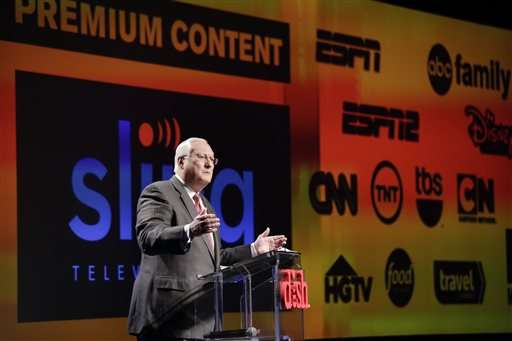Pay TV industry shows cracks in media earnings

Further cracks emerged this week in the pay TV bundle as media companies and distributors indicated that more people are cutting the cord and ditching pricey channel packages. Meanwhile, media company executives did damage control, putting a positive spin on the prospect of selling individual channels online.
Disney's stock tumbled 9 percent Wednesday, a day after reporting that it was trimming its forecast for TV subscriber-fee profit growth through next year because of subscriber losses at its flagship ESPN sports network. Other channel operators also saw shares drop. Viacom fell 7.5 percent, Time Warner fell 9 percent, CBS fell 4.6 percent and Discovery Communications fell 12.1 percent.
Dish said its satellite TV subscriber losses accelerated in the quarter through June, falling 81,000 to 13.9 million, nearly double the loss of 44,000 a year ago.
Viacom Inc., which owns Comedy Central and Nickelodeon, reported Thursday that its profit fell in the most recent quarter. While that is largely due to a lack of big films this year, there have been questions about how it will handle a shift in how people consume media. Its shares have fallen 32 percent this year, and they fell 4 percent before the opening bell.
Analysts say that popular channels like ESPN would likely survive any dramatic shift in consumer preference toward online channel packages like Sling TV, which at $20 a month, is far cheaper than traditional pay TV packages.
The question, wrote analyst Martin Pyykkonen of Rosenblatt Securities, is "whether the revenue substitution from skinnier bundles and/or a la carte channel plans will at least approximate the traditional cable bundle revenue over time."
Disney's profit-forecast cut suggested otherwise.
Disney CEO Bob Iger told analysts Tuesday that while the company is proactive in supplying ESPN to small online packages like Sling TV, "we don't think right now it's the greatest opportunity."
Iger said he didn't see "dramatic declines" in pay TV packages like those offered by DirecTV, Comcast and others "over the next, say, five years or so." He said he would contemplate options for ESPN if the traditional pay TV universe continued to shrink, "like going direct to consumers."
In the meantime, it was unclear whether individual channels and skinny channel bundles were succeeding.
Time Warner Inc. said its HBO Now app was the top-grossing app in Apple's iTunes store in May and June following its debut in April, and it was investing more in programming.
HBO chief Richard Plepler tried to allay fears that the single channel offering was causing people to drop bigger TV packages.
"We have seen less than 1 percent of HBO subs leave the bundle to go get HBO Now, which is exactly what we suspected was going to happen," he said. "We feel very good about it and we think HBO Now will be very profitable in the coming quarters."
The comments didn't generate overwhelming enthusiasm on Wall Street.
"The take rate is encouraging but I think it's still early," said Vasily Karasyov, senior research analyst with CLSA Americas. "You have to see conversion from free trial to full pay subscription and so on."
Meanwhile, CBS Corp. CEO Les Moonves was upbeat about CBS's go-it-alone online channels called CBS All-Access, which provides CBS content for $6 a month, and Showtime, with original shows and movies for $11 a month.
Not only are its online audiences younger—and therefore more valuable—but it is getting paid more for each subscriber than through traditional distributors, making any shift a benefit.
"Each of these deals resets the value of our content higher than it was before," he said.
© 2015 The Associated Press. All rights reserved.



















